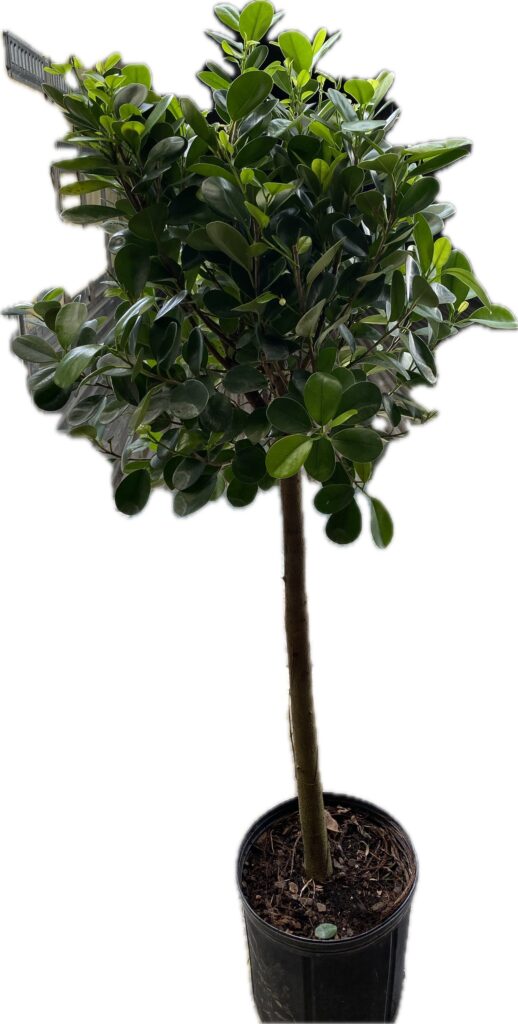
The Daniella ficus plant, also known as Ficus deltoidea, is a relatively lesser-known member of the Ficus genus. It’s appreciated for its attractive foliage and versatile growth habits.
We carry Daniella Ficus trees in 10″ pots.
Here’s a guide to understanding and caring for Daniella ficus plants:
Climate and Location
Light: It prefers bright, indirect light but can tolerate lower light conditions. Direct sunlight can scorch the leaves, so a spot with filtered light or partial shade is best.
Temperature: Ficus deltoidea thrives in warm conditions, ideally between 60-80°F. It’s not frost-tolerant, so protect it from cold drafts and temperatures below 50°F.
Soil Requirements
Type: Use a well-draining potting mix. A standard houseplant mix or a blend of peat, perlite, and pine bark works well. Good drainage is important to avoid root rot.
pH: Ficus deltoidea prefers slightly acidic to neutral soil, around pH 6.0 to 7.0.
Watering
Frequency: Water the plant when the top inch of soil feels dry. It’s important not to overwater, as this can lead to root rot. The plant generally needs more frequent watering during the growing season (spring and summer) and less in the winter.
Method: Water thoroughly until excess water drains out from the bottom of the pot. Ensure the pot has proper drainage.
Fertilizing
Type: Use a balanced, water-soluble fertilizer or one designed for indoor plants.
Frequency: Feed the plant every 4-6 weeks during the growing season (spring and summer). Reduce feeding in the winter when the plant’s growth slows.
Pruning
Purpose: Pruning helps manage the plant’s size and shape, encourages bushier growth, and removes any dead or damaged foliage.
Method: Trim back overgrown stems and remove any yellow or brown leaves. Pruning can also help promote a fuller appearance.
Pests and Diseases
Pests: Common pests include spider mites, scale insects, and mealybugs. Regularly inspect your plant and treat any infestations with insecticidal soap or neem oil.
Diseases: Fungal issues can occur, especially if the plant is overwatered. Ensure good air circulation and avoid excessive moisture on the leaves.
Repotting
Frequency: Repot every 1-2 years or when the plant outgrows its container. This also allows you to refresh the soil and check the root system.
Method: Choose a pot that is slightly larger than the current one. Gently remove the plant, loosen the roots if needed, and place it in the new pot with fresh soil.
Special Considerations
Toxicity: Ficus deltoidea contains latex, which can be mildly toxic if ingested. Keep it out of reach of pets and small children.
Support: This plant typically doesn’t need additional support unless it becomes very tall or top-heavy.
Varieties and Appearance
Appearance: Ficus deltoidea is known for its triangular, dark green leaves and can produce small, inconspicuous flowers. The plant often has a bushy, compact growth habit.
Daniella ficus plants are relatively low-maintenance and can be a great addition to indoor gardens. With the right care, they will reward you with lush, attractive foliage and a healthy, vibrant presence in your home.
If you have any questions, feel free to call us at (352) 735-8350 or come by the nursery. Our hours are Monday-Friday 8-5 p.m.
